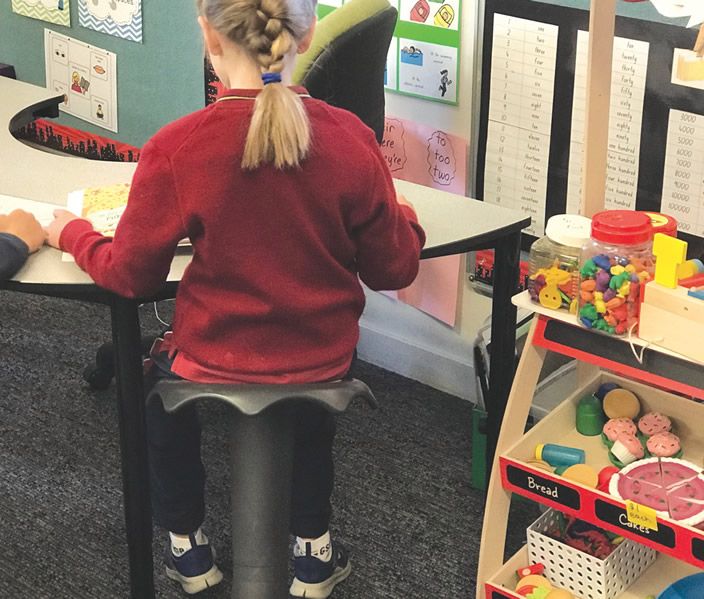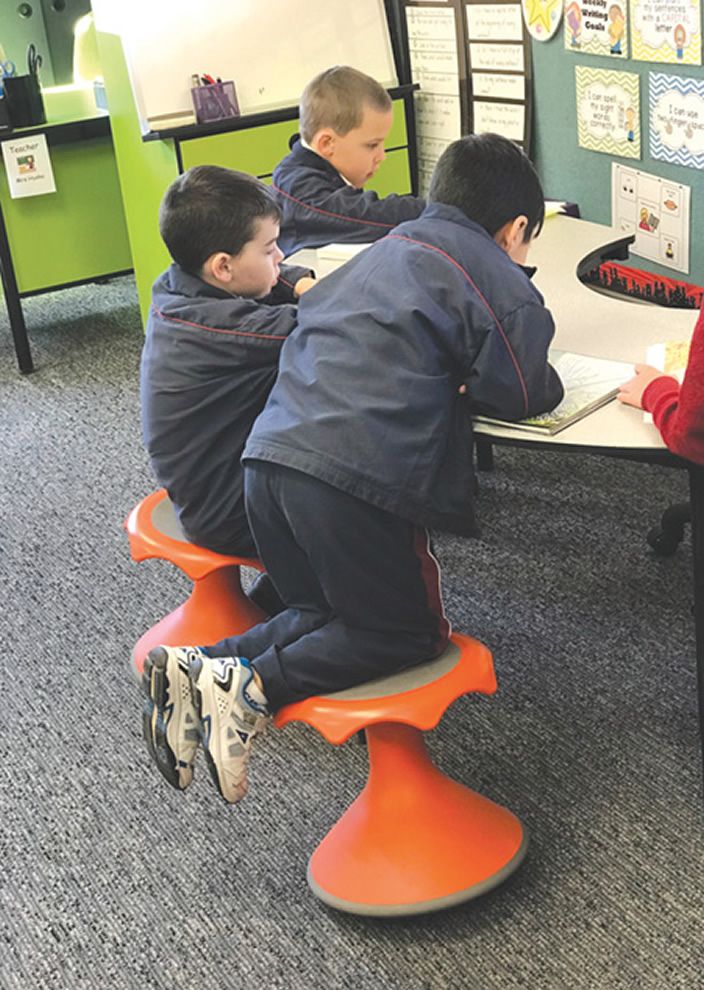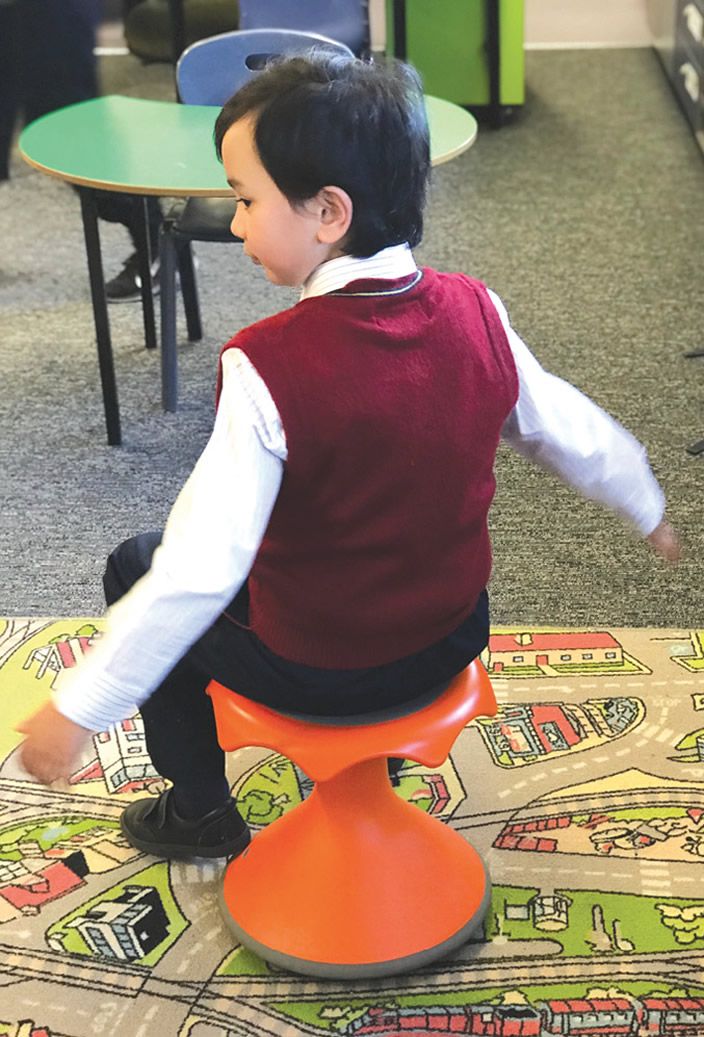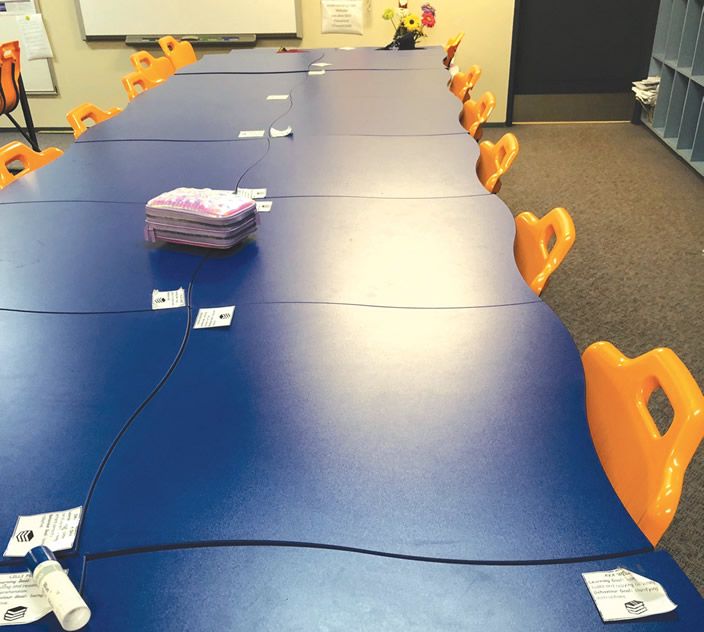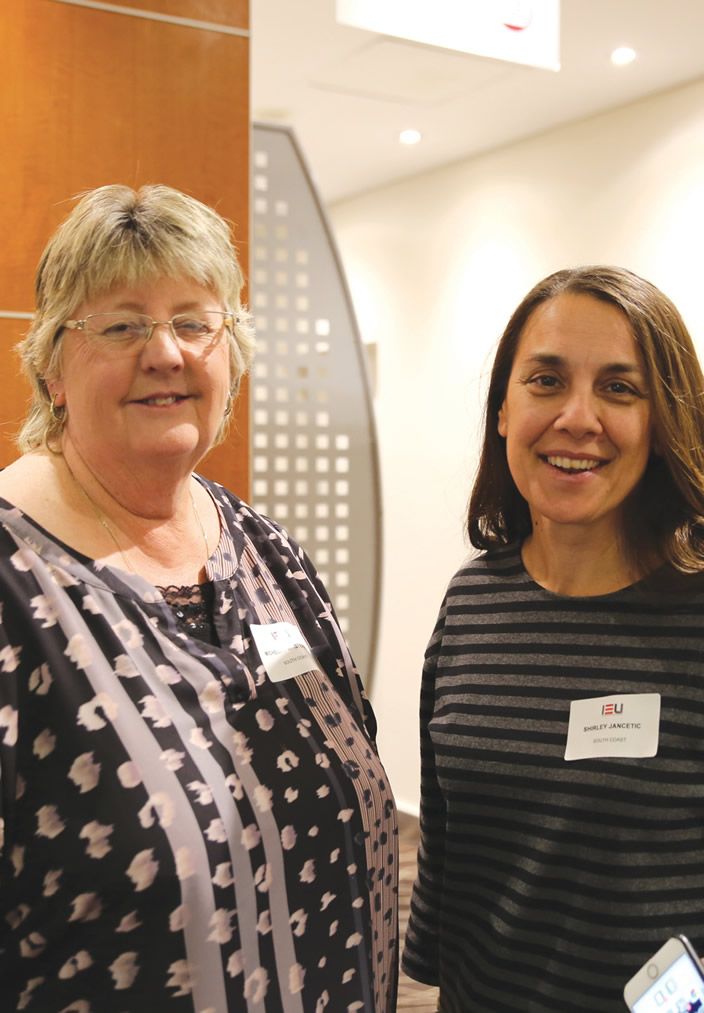
Hokki, flexible stools and wobble chairs are active learning seating options now used in and out of school classrooms. These teaching aids allow students to gently rock and move on their chair or stool. Shirley Jancetic and Michelle Masterson (above left) are teachers in Catholic systemic schools on NSW’s south coast. They talk with journalist Bronwyn Ridgway about the way they use these teaching aids and the success they’ve experienced with them.
Teachers and support staff say these versatile, colourful seating options help reduce strain on the musculo-skeletal system and help children’s engagement in learning.
They are being used for general class activities as well as an aid for students who benefit from movement in order to focus and learn.
Most often used as an option for children with additional learning needs, the stool and chair encourage mobility and core strength, supporting an active learning environment where physical movement is used to assist focus, memory and cognitive development.
“At my school the wobble chairs are mainly used in our specialist classroom settings for children aged 5 to 11 years who have additional learning needs. They’re used as a seating option within the classroom and students have a choice whether to sit on them or not. Sometimes a teacher might encourage a student to choose the wobble chair as it allows, even encourages, the child to move while seated,” Jancetic said.



































































































































